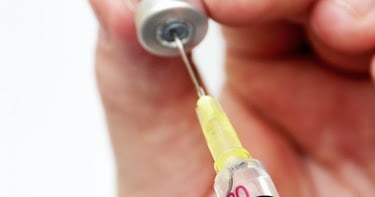An analysis of more than 60 clinical studies and nearly 60,000 adult patients conducted from 1996...
When Is Depression 'Treatment Resistant'?
 |
In an article appearing in the January issue of JAMA Psychiatry, Charles Conway, M.D., Mark George, M.D., and Harold Sackheim, Ph.D., wrote that the lack of a consensus definition around what constitutes treatment-resistant depression (TRD) “limits the ability to do comparative treatment research, to understand the biological underpinnings of TRD, and produces ambiguous medical insurance coverage issues.”
Drawing on data from the Sequenced Treatment Alternatives to Relieve Depression (STAR*D) trial, the authors proposed a definition for TRD: failure to respond to two trials of an antidepressant prescribed at an adequate dose for an adequate duration of time.
Conway (pictured above), a professor of psychiatry and director of the Treatment Resistant Depression and Neurostimulation Clinic at Washington University, St. Louis, told Psychiatric News that in the absence of a consensus definition of TRD, patients often receive multiple trials of medication. “Our experience has been that when faced with patients who do not respond to a series of medications, clinicians typically continue to give more similar medications, despite there being no evidence to support that the fifth or sixth medication will work,” he said.
In STAR*D, patients with MDD received sequential treatment with antidepressants or psychotherapy using evidence-based antidepressant treatment strategies. At each stage of treatment, the likelihood that patients would respond decreased.
In the JAMA Psychiatry article, Conway and colleagues wrote that the “inflection point at which resistance markedly increased was level 3 (two adequate dose-duration treatments).” At that point, fewer than 1 in 5 patients remitted, they noted. “At subsequent trials (level 4) treatment failure rose to 90 percent,” Conway and colleagues wrote.
“After failure of two adequate dose-duration trials of antidepressants, augmentation strategy, or psychotherapy, a precipitous decrease to a remission rate of 5 percent or less was observed,” they wrote. “We believe this represents a starting point for operationally defining TRD.”
Have You Voted in APA’s 2017 Election Yet?
Learn about this year’s slate of candidates, their priorities, and backgrounds at the apa elections page and watch video interviews of the candidates for president-elect and secretary. Voting closes on Tuesday, January 31. Click here to vote now and be part of the process.





